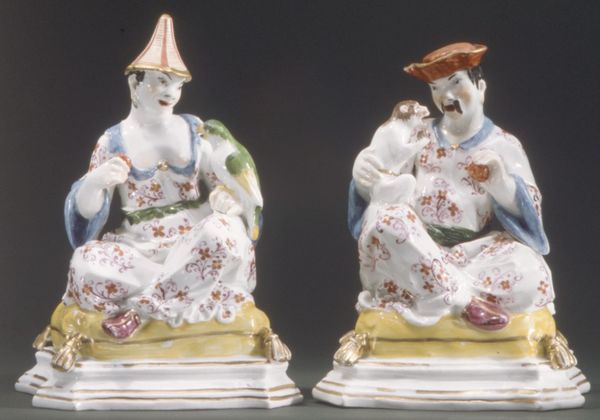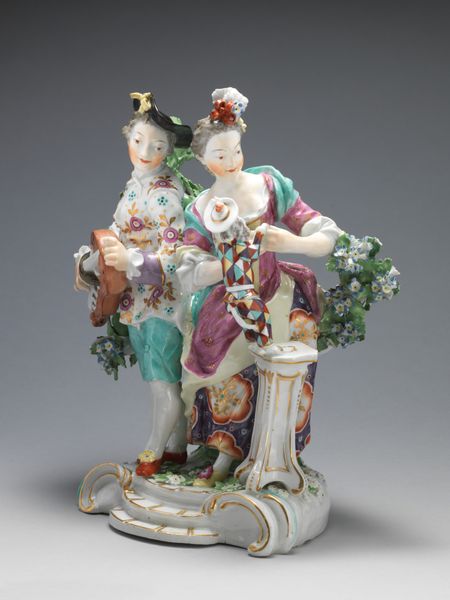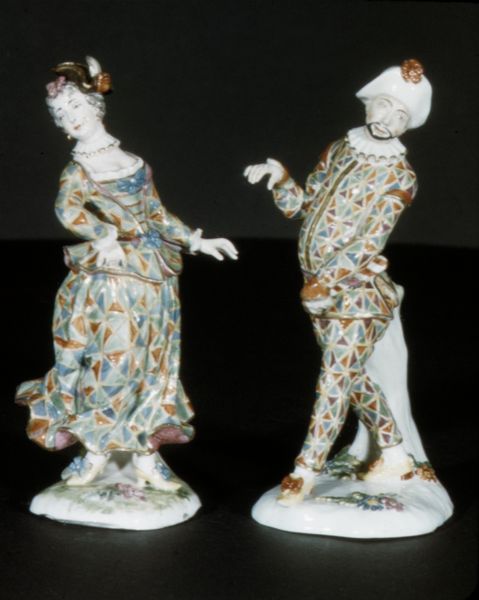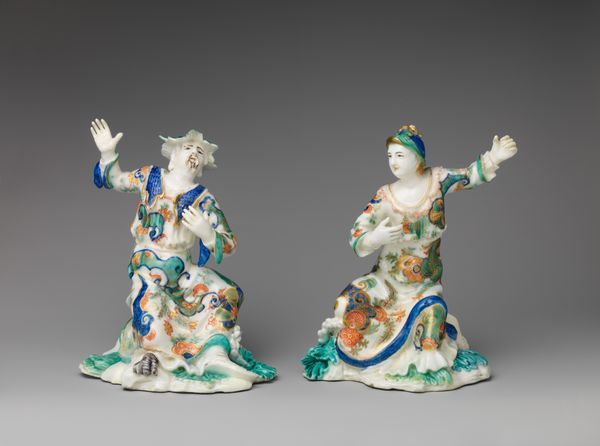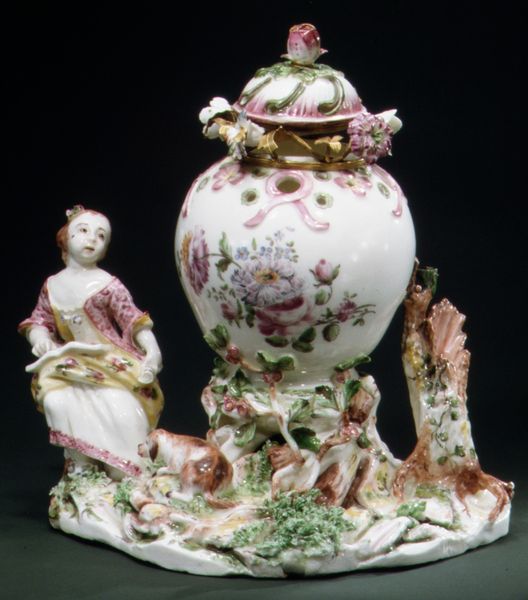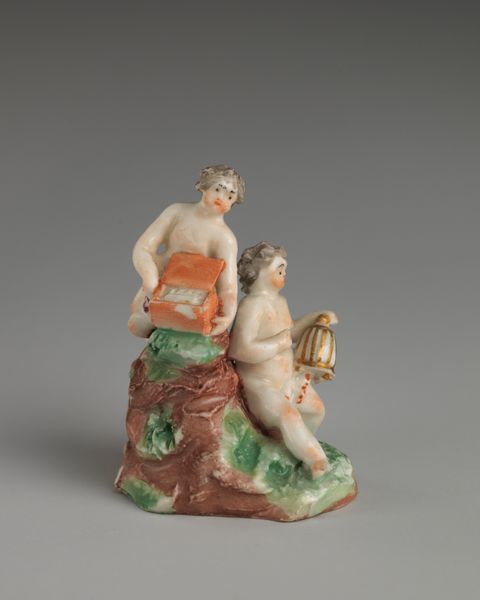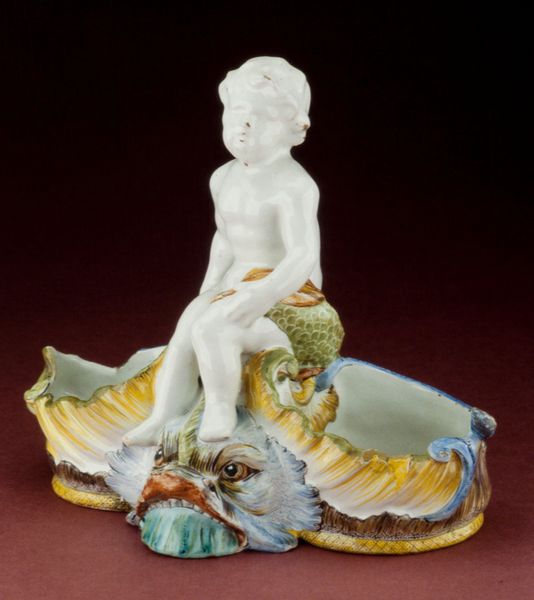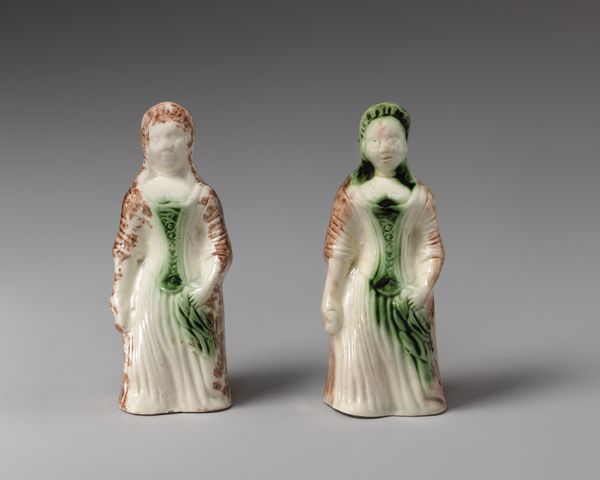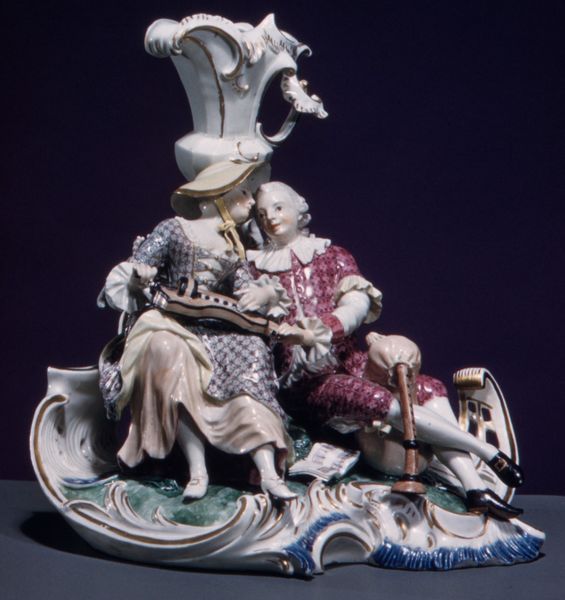
Dimensions: Length (.183): 7 7/8 in. (20 cm); Length (.184): 7 5/8 in. (19.4 cm)
Copyright: Public Domain
These porcelain sphinxes were made in Bristol, England, at an unknown date. The sphinx is a composite creature with the body of a lion and the head of a human, and it has been a powerful symbol in many cultures across time and place. Here, the classical, mythological image has been transformed. These sphinxes have European features and wear pearl necklaces and floral garments. What does it mean to see the imagery of classical mythology re-imagined in eighteenth-century England? Perhaps they speak to England's colonial ambitions, as it sought to emulate empires of the past. Or, they might reflect the rising status of women in English society. By researching the economic and social conditions of Bristol in the eighteenth century, we can better understand the cultural meanings these objects might have held. Studying decorative objects like this can help us to understand the social and institutional forces at play in the production and reception of art.
Comments
No comments
Be the first to comment and join the conversation on the ultimate creative platform.
